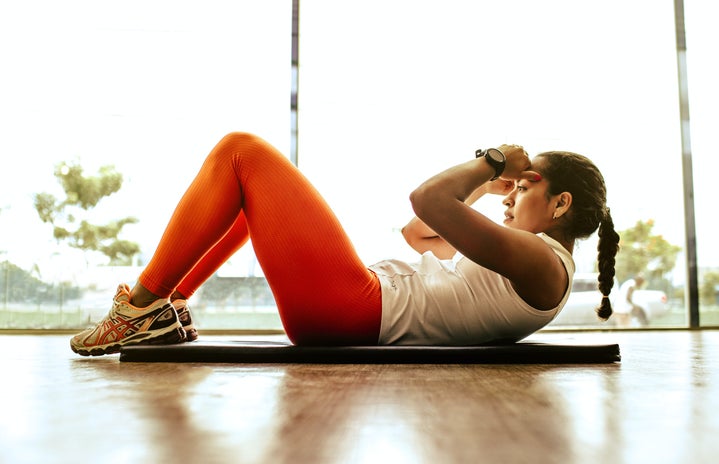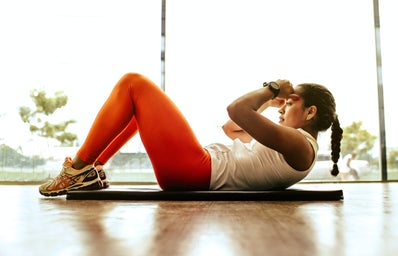At the age of 13, puberty hit me like a freight train straight to the chest. I’d always been small-framed—on a good day, I still don’t stand over 5’2”—and by eighth grade, I had 32D-cup breasts. D’s really aren’t that big, but to a bunch of 13-year-old boys, they might as well have been two Mount Everest’s sitting under my shirt. At first, I liked the attention or at least liked that other girls weren’t getting it, but the pencils being thrown down my shirt soon lost all novelty, and the start of a very long battle with my bosoms began. It wasn’t long into high school before my friends and I would wear the same top and mine was deemed “inappropriate” and theirs were not. I started to get teased for trying to show off and was accused of stuffing my tops or wearing push-up bras. I started to wear clothing that was ill-fitting so no one, including myself, would be reminded of my breasts that seemed to be growing bigger each day.
At 14, my mother told me I was going to need a reduction. I thought she was being dramatic, and there was no way it would ever come to that. But I was a competitive dancer and would wear multiple sports bras to control the painful bouncing while I worked out. I had to see a massage therapist twice a week before school and a physiotherapist on the weekends to ease the back pain caused by my chest. I guess you could say I was in denial, and it went on for a very long time.
By 16, I found it hard to look at myself in the mirror. When I got dressed in the morning, I would avoid my reflection as if it inflicted physical pain. I wore 32DD bras, which only came in the thrilling colour choices of beige and black. When you’re young, people will tell you to love your breasts while you still can, because soon you’ll get old and they’ll sag. No one tells you that if you have large breasts, they sag regardless of age. I was ashamed to even take my bra off, anticipating the dreaded drop as my breasts hung in natural position. Regardless of all of these factors, I wouldn’t even begin to consider a reduction until I was 19 years old.
I went to my family doctor to tell him I wanted a reduction, and to put it simply, the meeting didn’t go well. He told me I “wasn’t even that big” and that I should look at before and after pictures, because after was always worse. To top off his argument, he said I probably wouldn’t be able to breastfeed, making the assumption that I was obviously going to bear children. I left his office so angry, and it was by my mother’s good graces that we found a female doctor to discuss my situation and thereby not abandon all hope. All she asked for was my current weight, my height, and my chest size. We had a short discussion about my back pain, and she signed a form that reported that my reduction was medically justified and should, therefore, be covered by health insurance. From there, I began googling surgeons and landed on one who was very highly reviewed in her field, then set up an appointment.
The surgeon and I met only once before she performed the procedure. She asked what my ideal size would be. At the time, I was a 32E and knew my chances of getting below a C weren’t great, but it was what I would have wanted in a perfect world. When getting a reduction, you don’t get to pick your size the way you pick your size of a morning coffee: the surgeon can only take off as much as possible, and nothing more can be done.
Surgery wasn’t scary, and I didn’t feel a thing. I took two weeks off work just to make sure I’d fully recovered, but I would have been fine after just one. It felt like I had done a lot of push-ups and needed my mother to help me sit up for about two days. The incisions my surgeon performed are called the “lollipop” technique; this is used to minimize scarring. After three years, I still do have scars, but they’re nearly invisible on one side. Not only were my breasts reduced, but my areolas were made smaller and my breasts lifted. For a while, they were so swollen that it felt as if they hadn’t been reduced at all, but this subsided and they relaxed into a natural position and consistent size.
The greatest change induced by the reduction was the effect on my mental health. I was able to buy clothing that fit and I could look in the mirror again. I regained the confidence I hadn’t known was inside me all along. Buying my first bralette after surgery made both my mother and me tear up. The chronic back pain I suffered from lost its edge and is now very minimal. My bras no longer cost over a hundred dollars, I fit into swimsuits, and I will scream it from the rooftops—I love my breasts, which are now a beautiful 34C. A reduction was the right choice for me, and I urge anyone else who struggles with a part of their body in a similar way to explore the available options. I went under the knife and came out another person: a better, healthier, and happier version of myself.


